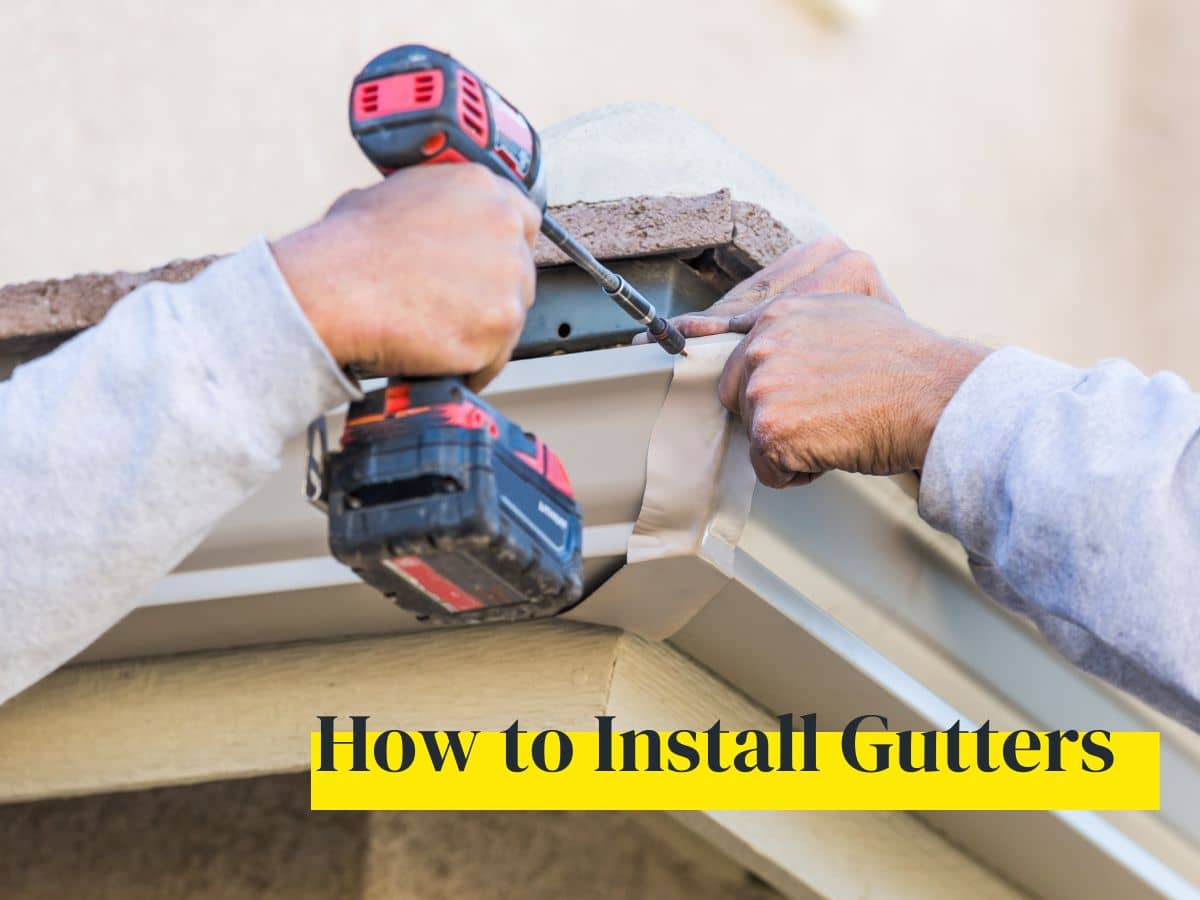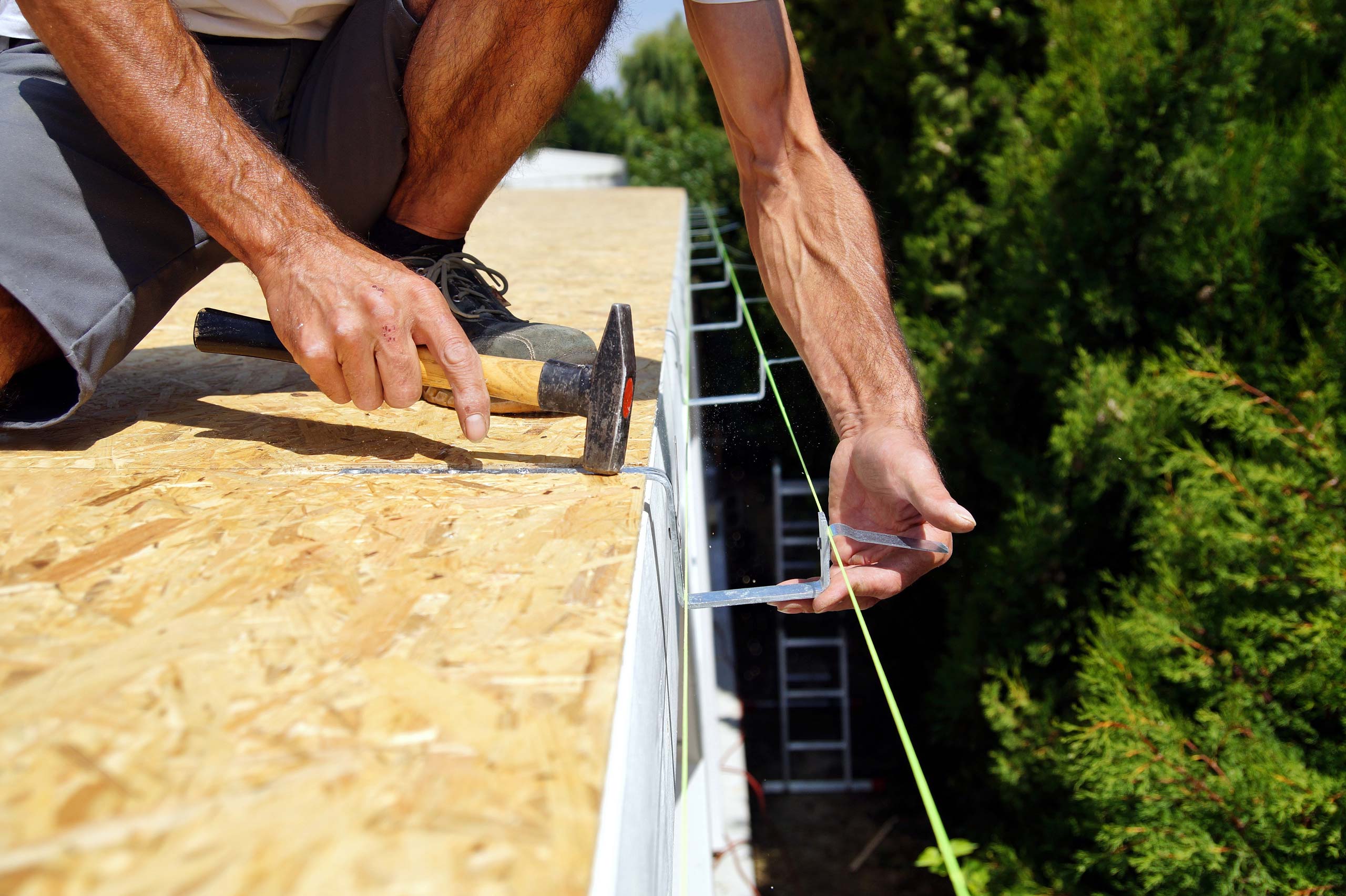Gutters play a vital role in protecting your home from water damage. Properly installed gutters ensure effective drainage, preventing water from seeping into your foundation, damaging your landscaping, or causing structural issues. In this ultimate guide, we will provide you with a step-by-step process to install gutters like a professional, allowing you to undertake this DIY home improvement project with confidence.
I. Understand Your Gutter System
Before diving into the installation process, it’s crucial to understand the different types of gutters and their suitability for your home. Here are some key points to consider:
Types of Gutters
- Seamless gutters: These gutters are custom-made on-site to fit your home precisely. They offer a sleek appearance and minimize leakage risks due to fewer joints.
- Sectional gutters: Assembled from pre-cut sections, these gutters are more affordable but have more potential for leaks.
- Vinyl gutters: Durable and low-cost gutters suitable for DIY installations.
- Aluminum gutters: Lightweight, rust-resistant, and available in various colors.
Determining Gutter Size
To determine the appropriate gutter size, consider your home’s square footage, roof slope, and rainfall intensity. This table can help you select the right dimensions:
| Roofing Area | Gutter Size |
| Up to 600 sq. ft. | 5-inch gutter |
| 601-1,100 sq. ft. | 6-inch gutter |
| 1,101-2,000 sq. ft. | 7-inch gutter |
| 2,001-3,600 sq. ft. | 8-inch gutter |
II. Gather Tools and Materials
Before you begin the installation process, make sure you have the necessary tools and materials on hand. Here is a comprehensive list of what you will need:
Tools:
- Ladder
- Drill
- Measuring tape
- Hacksaw
- Silicone sealant applicator
- Hammer
Materials:
- Gutters (seamless or sectional)
- Downspouts
- Elbows
- Brackets
- End caps
- Screws (stainless steel hex head sheet metal screws are recommended)
- Silicone sealant
III. Plan and Measure
Proper planning and accurate measurements are crucial for a successful gutter installation. Follow these steps:
- Measure the Gutter Run:
- Measure the length of the gutter run along the fascia board.
- Determine the number of downspouts needed based on the recommended spacing of 30 to 40 feet.
- Design and Plan the Gutter Layout:
- Consider aesthetics and functionality when planning the gutter layout.
- Ensure the gutter slope is 1/4 inch per 10 feet to facilitate proper water flow.
IV. Prepare Your Workspace
Creating a safe and clean workspace is essential for a smooth gutter installation process. Here are some important steps to follow:
- Safety Precautions:
- Use proper ladder techniques and ensure it is stable.
- Wear appropriate safety gear, including gloves and safety goggles.
- Clearing the Workspace:
- Remove any debris or leaves from the roof and gutter area.
- Clean the fascia board to ensure a smooth surface for gutter attachment.
V. Install the Gutters
Now let’s dive into the actual gutter installation process. Follow these step-by-step instructions:
- Attach Brackets or Hangers:
- Attach brackets or hangers to the fascia board using stainless steel screws.
- Ensure brackets are evenly spaced and provide sufficient support for the gutter system.
- Cut and Join Gutter Sections:
- Measure and cut the gutter sections according to the dimensions of your gutter run.
- Connect gutter sections using connectors or slip joints, ensuring a secure fit.
- Install End Caps:
- Attach end caps to seal off the ends of the gutters.
- Use sealant to ensure a watertight connection.
- Secure Downspouts:
- Attach downspouts to the gutters using elbows.
- Ensure downspouts are directed away from the foundation of your home.
VI. Secure and Seal
To ensure the stability and functionality of your gutter system, follow these steps:
- Secure Gutter to the Fascia:
- Using screws or hangers, secure the gutter to the brackets mounted on the fascia.
- Ensure the gutter is level and properly aligned.
- Apply Sealant:
- Apply gutter sealant or silicone along the seams and joints to prevent leaks.
- Use a caulking gun for precise application.
VII. Testing and Maintenance
After installing your gutters, it’s crucial to test their functionality and perform routine maintenance. Here’s what you should do:
- Run a Water Test:
- Test your gutters by running water through them to check for proper drainage and any potential leaks.
- Adjust the gutter slope if necessary to improve water flow.
- Perform Regular Maintenance:
- Regularly inspect and clean your gutters to remove debris and prevent clogs.
- Check for any damage or loose components and repair or replace as needed.
When to Replace Gutters
Knowing when to replace gutters is crucial for maintaining the integrity of your home. Signs that it may be time for a replacement include visible cracks or splits, rust, peeling paint, or water damage on the fascia. If your gutters are pulling away from the house or sagging, this is another indication that they need to be replaced. Additionally, if you notice standing water or visible mold around the foundation of your home, it’s time to consider a replacement. Regular maintenance and inspections can help catch these warning signs early, preventing further damage to your home. Don’t wait until it’s too late to replace your gutters.
Can I install gutters myself?
Yes, it is possible to install gutters yourself, but it can be a challenging and time-consuming task. You will need the right tools, materials, and knowledge to do the job effectively. Properly installing gutters involves measuring, cutting, securing, and sealing the gutters and downspouts, as well as ensuring they are pitched at the right angle for proper drainage. It is important to consider the safety risks of working at heights and the potential for mistakes that could lead to water damage and costly repairs. If you are unsure about your abilities, it may be best to hire a professional to ensure the job is done correctly.
Conclusion
By following this comprehensive guide on how to install gutters, you can confidently take on this DIY project and protect your home from potential water damage. Remember to plan, measure, and gather the necessary tools and materials before starting the installation. With proper techniques and maintenance, your newly installed gutters will efficiently divert rainwater away from your home, ensuring its longevity and structural integrity. Remember to take appropriate safety precautions and consider seeking assistance from a professional if needed. Happy gutter installation!



